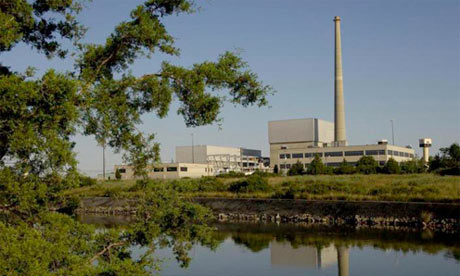 We know the bad news about superstorm Sandy: the Jersey shore was devastated and many towns remain waterlogged. New York suffered a direct hit, with the city's mass transit system flooded and part-paralyzed for days to come.
We know the bad news about superstorm Sandy: the Jersey shore was devastated and many towns remain waterlogged. New York suffered a direct hit, with the city's mass transit system flooded and part-paralyzed for days to come.
But there is good news, too, and that is all that it failed to do. Sandy did not kill hundreds – as Hurricane Katrina did in New Orleans in 2005 – thanks, in part, to timely evacuations and rescue efforts. And luckily, it did not trigger an even greater disaster at one of the region's nuclear power plants. But it could have.
Watchdog groups like the Union of Concerned Scientists (UCS) warn that America's nuclear facilities remain vulnerable to a variety of potential catastrophic events, both natural and resulting from deliberate sabotage or cyber-attack. And they say that federal regulations are currently inadequate to deal with all of these possible disaster scenarios.
I reported on one such danger, solar flares, last May in the New York Daily News. A 2011 study by the Oak Ridge National Laboratory warns that a massive solar storm could knock out electricity in some areas for weeks, overwhelming the capacity of many nuclear plants to keep their critical cooling systems operational.
But nuclear regulators have not required power plants to guard against the risk of solar storms. David Lochbaum, the director of UCS's nuclear safety project told me in an email interview that the Nuclear Regulatory Commission licenses plants "using the rearview mirror". It looks to the past, in other words, to assess future risks.
More...





 As parts of the central U.S. recover from a deadly outbreak of severe weather, a line...
As parts of the central U.S. recover from a deadly outbreak of severe weather, a line... The island of Puerto Rico is suffering another island-wide power outage, just months after a dayslong...
The island of Puerto Rico is suffering another island-wide power outage, just months after a dayslong... Letters went out to hundreds of workers at the National Oceanic and Atmospheric Administration (Noaa) on...
Letters went out to hundreds of workers at the National Oceanic and Atmospheric Administration (Noaa) on...






























